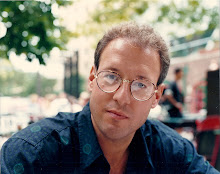
Tuesday, July 24, 2012
Is your product positioning "corn fed?"
Wednesday, July 18, 2012
Coke Cannes
How did Coke find happiness? By graduating our Extreme Product Makeovers Coke found that "a sale is a transfer of enthusiasm." Happiness promotes enthusiasm. Happiness promotes positive emotional response. But does happiness promote carbonated sales? True, Coke spreads Happiness and wins advertising awards but does happiness translate into sales for Coke?
Happiness is not "It" for Coke. Happiness is a generic cost-of-entry parameter. Happiness is not 'ownable' - No matter how many impressions the company's corporate coffers cough up. The most highly consumer-desired product potential to use to reverse declines in carbonated beverage consumption is something else. There is a more powerful "Special User Effect" to better drive consumer habits and practices that can be owned. But nice work collecting the bling. Does anyone other than the agency take that to the bank?
Wednesday, March 21, 2012
The Strategy of Whiz Kids
But in this is the point that the two competitors target audiences based on "cost-of-entry" parameters. Things taken for granted by the majority. An adult with no children would feel uncomfortable working with our orthodontist. A child would feel uncomfortable being treated in a room surrounded by 55 year old adults.
So how would orthodontists better differentiate themselves within their respective audiences? Orthodontists targeting children and orthodontists targeting adults better differentiate themselves by identifying a "reason-for-being" within their sphere to which patients better relate. In the same way both Folgers and Maxwell House "deliver" flavor and aroma both cannot occupy the same "mental space."
To set themselves apart Maxwell House stays the course with various forms of "Good to the last drop" messaging. What's good to the last drop? The coffee. What about the coffee's good to the last drop? The flavor and aroma. What could be finer than that?
Mrs Olsen! She said drink "Mountain Grown" Folgers. Mountain grown was supposed to be the support point to the contention or unique selling proposition that Folgers was "the richest kind." The richest kind of what? The richest kind of coffee. What about the coffee was "the richest kind?" The flavor and aroma. So you see, we have two products not doing a very good job differentiating themselves. Both focus on a "sensory" parameter category consumers generally take for granted.
How'd one get off the treadmill? By focusing on another and more consumer-relevant "reason-for-being." By focusing on "stimulation" rather than "flavor" and "aroma" Folgers became "the best part of waking up is Folgers [or caffiene] in your cup?
What happened? A $300 million Folgers business became a $1.6 product.
So what's your "reason-for-being" versus your competitors. And is it that good?
That's thinking outside of the box :)
Labels:
coffee,
Differentiate,
Folgers,
ground roast,
Maxwell House,
reason for being,
strategy,
Whiz Kids
Subscribe to:
Posts (Atom)











